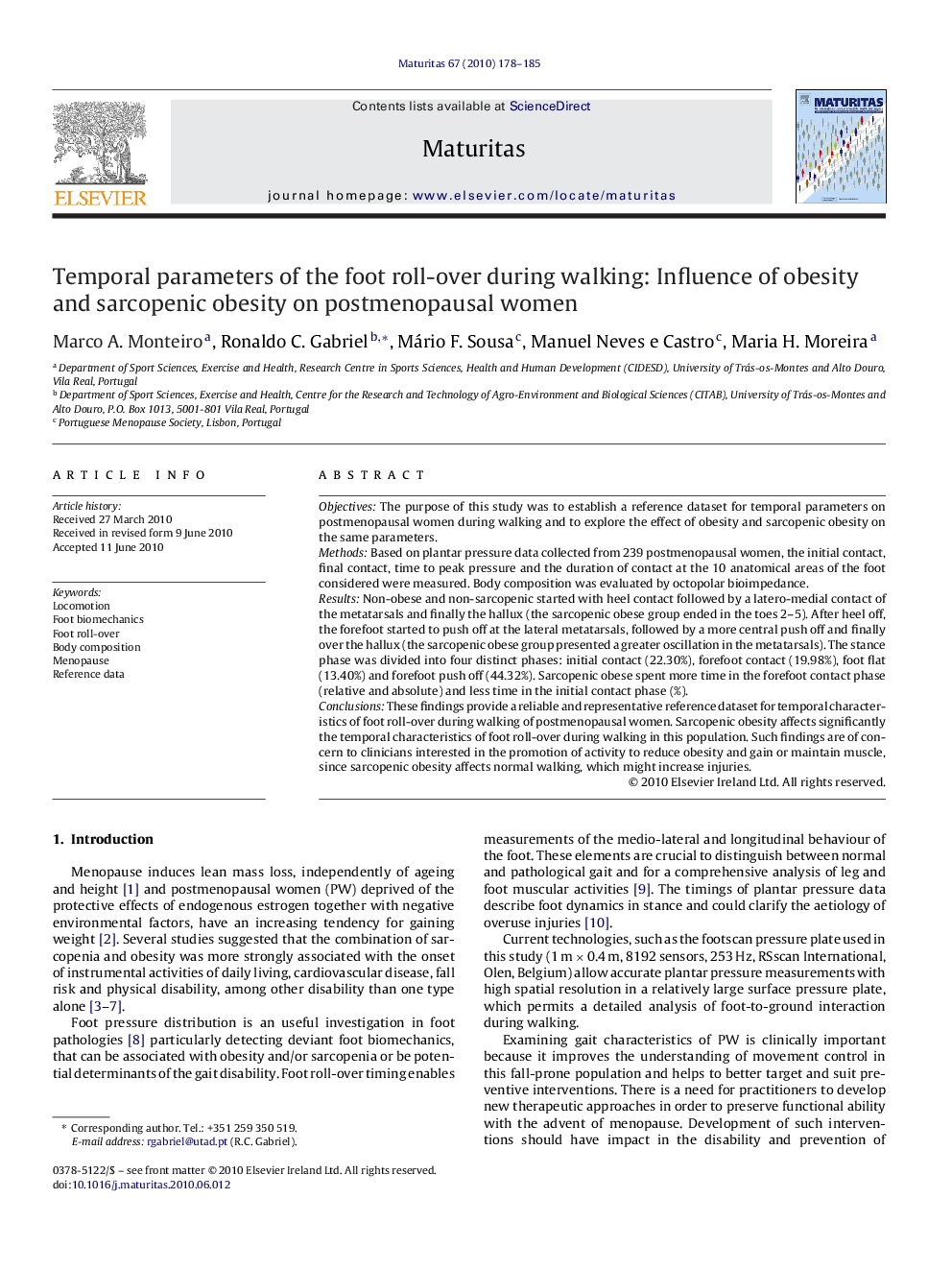| Article ID | Journal | Published Year | Pages | File Type |
|---|---|---|---|---|
| 1918141 | Maturitas | 2010 | 8 Pages |
ObjectivesThe purpose of this study was to establish a reference dataset for temporal parameters on postmenopausal women during walking and to explore the effect of obesity and sarcopenic obesity on the same parameters.MethodsBased on plantar pressure data collected from 239 postmenopausal women, the initial contact, final contact, time to peak pressure and the duration of contact at the 10 anatomical areas of the foot considered were measured. Body composition was evaluated by octopolar bioimpedance.ResultsNon-obese and non-sarcopenic started with heel contact followed by a latero-medial contact of the metatarsals and finally the hallux (the sarcopenic obese group ended in the toes 2–5). After heel off, the forefoot started to push off at the lateral metatarsals, followed by a more central push off and finally over the hallux (the sarcopenic obese group presented a greater oscillation in the metatarsals). The stance phase was divided into four distinct phases: initial contact (22.30%), forefoot contact (19.98%), foot flat (13.40%) and forefoot push off (44.32%). Sarcopenic obese spent more time in the forefoot contact phase (relative and absolute) and less time in the initial contact phase (%).ConclusionsThese findings provide a reliable and representative reference dataset for temporal characteristics of foot roll-over during walking of postmenopausal women. Sarcopenic obesity affects significantly the temporal characteristics of foot roll-over during walking in this population. Such findings are of concern to clinicians interested in the promotion of activity to reduce obesity and gain or maintain muscle, since sarcopenic obesity affects normal walking, which might increase injuries.
